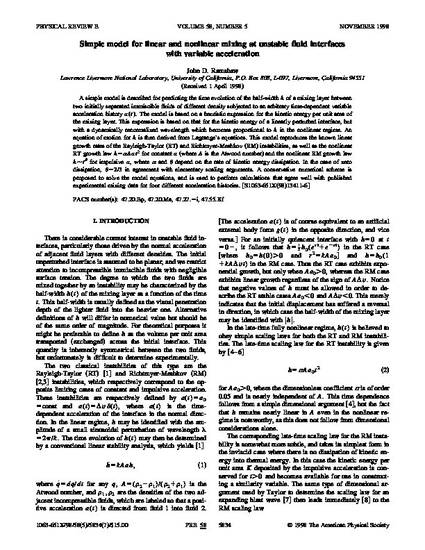
- Turbulence -- Mathematical models,
- Fluid dynamics,
- Change of state (Physics)
A simple model is described for predicting the time evolution of the half-width h of a mixing layer between two initially separated immiscible fluids of different density subjected to an arbitrary time-dependent variable acceleration history a(t). The model is based on a heuristic expression for the kinetic energy per unit area of the mixing layer. This expression is based on that for the kinetic energy of a linearly perturbed interface, but with a dynamically renormalized wavelength which becomes proportional to h in the nonlinear regime. An equation of motion for h is then derived from Lagrange's equations. This model reproduces the known linear growth rates of the Rayleigh-Taylor (RT) and Richtmyer-Meshkov (RM) instabilities, as well as the nonlinear RT growth law h=αAat2 for constant a (where A is the Atwood number) and the nonlinear RM growth law h~tθ for impulsive a, where α and θ depend on the rate of kinetic energy dissipation. In the case of zero dissipation, θ=2/3 in agreement with elementary scaling arguments. A conservative numerical scheme is proposed to solve the model equations, and is used to perform calculations that agree well with published experimental mixing data for four different acceleration histories.

This is the publisher's final pdf. Article appears in Physical Review E (http://pre.aps.org/) and is copyrighted by APS Journals (http://publish.aps.org/)
*At the time of publication John Ramshaw was affiliated with the Lawrence Livermore National Laboratory, University of California